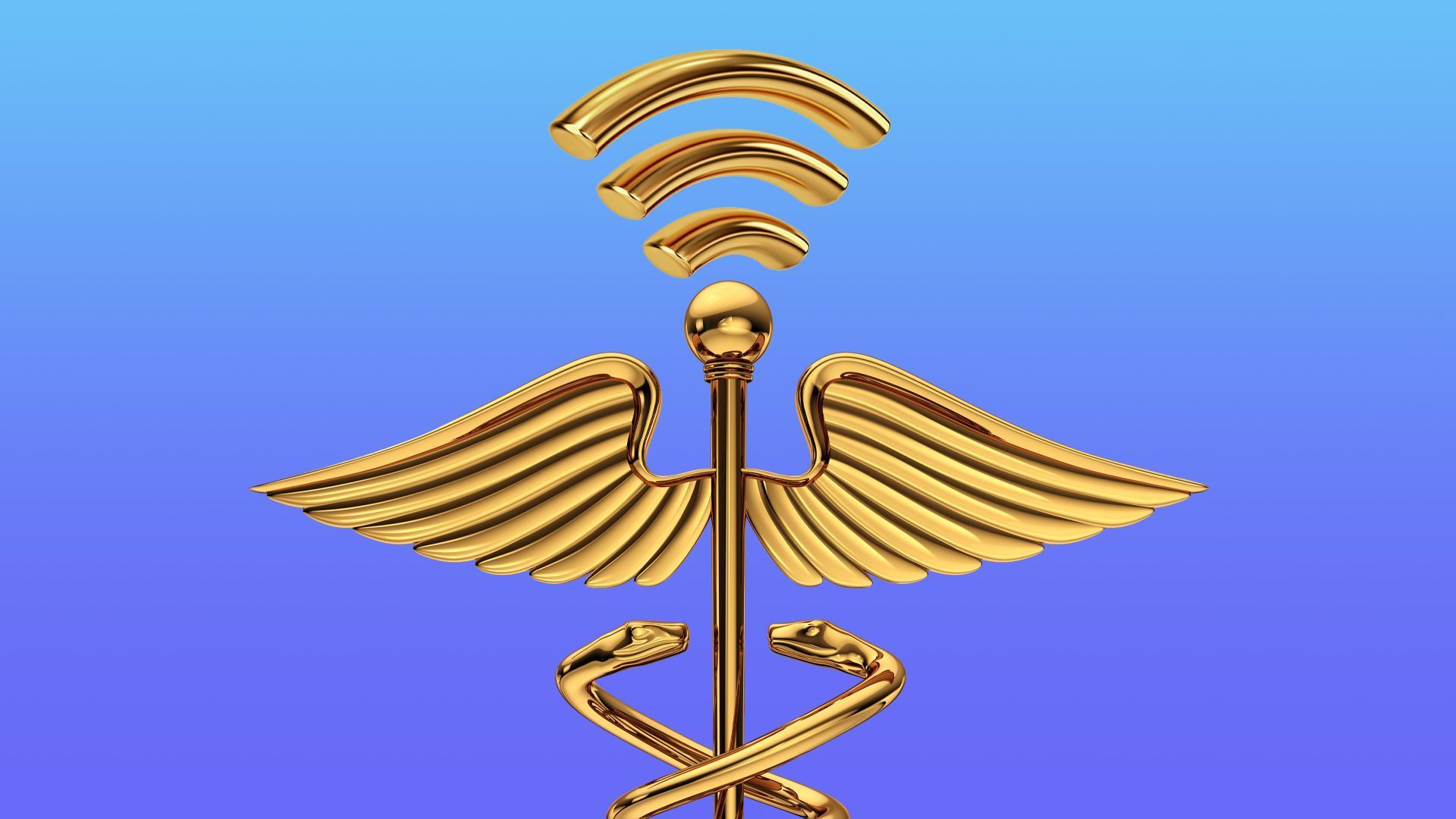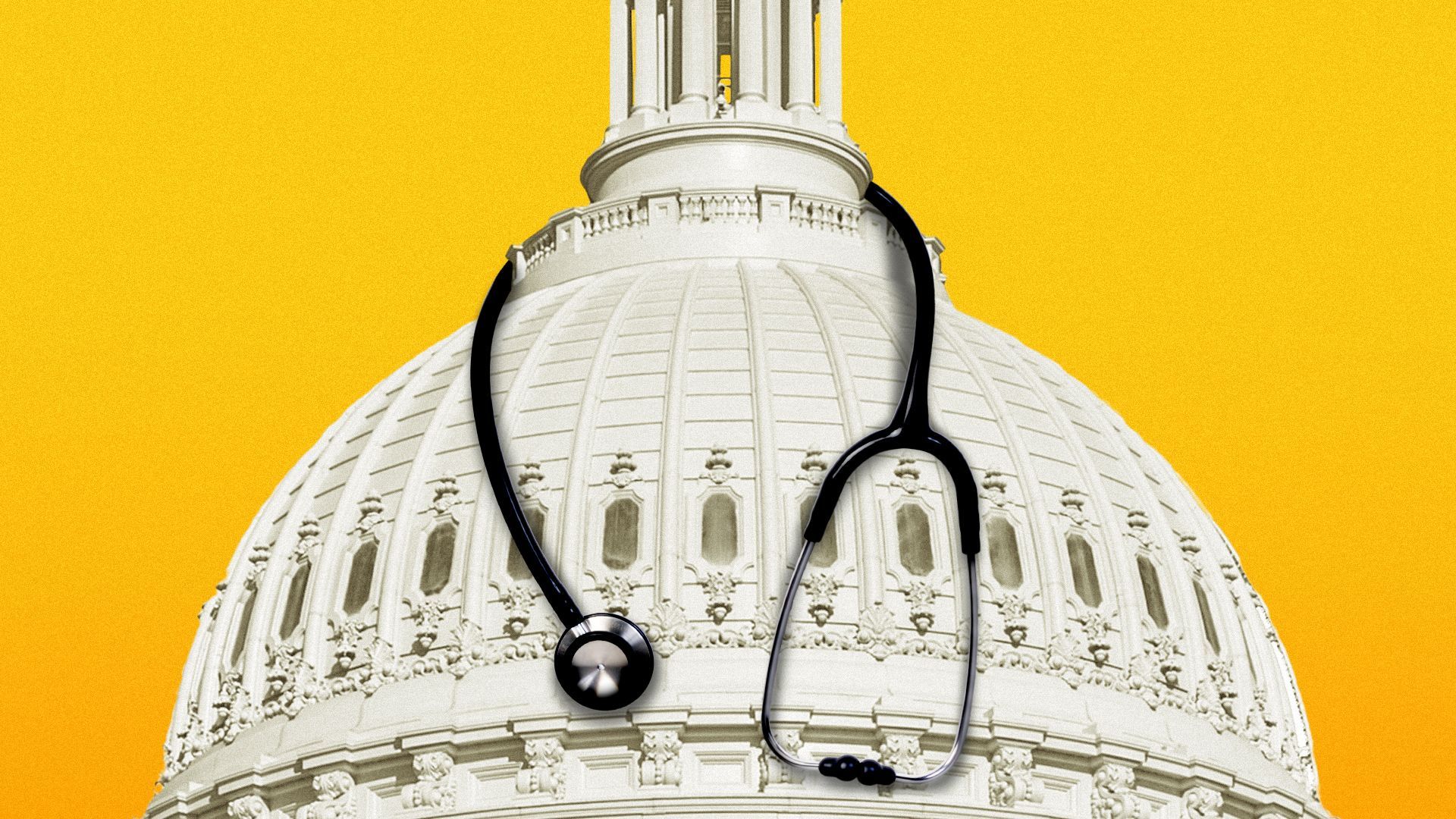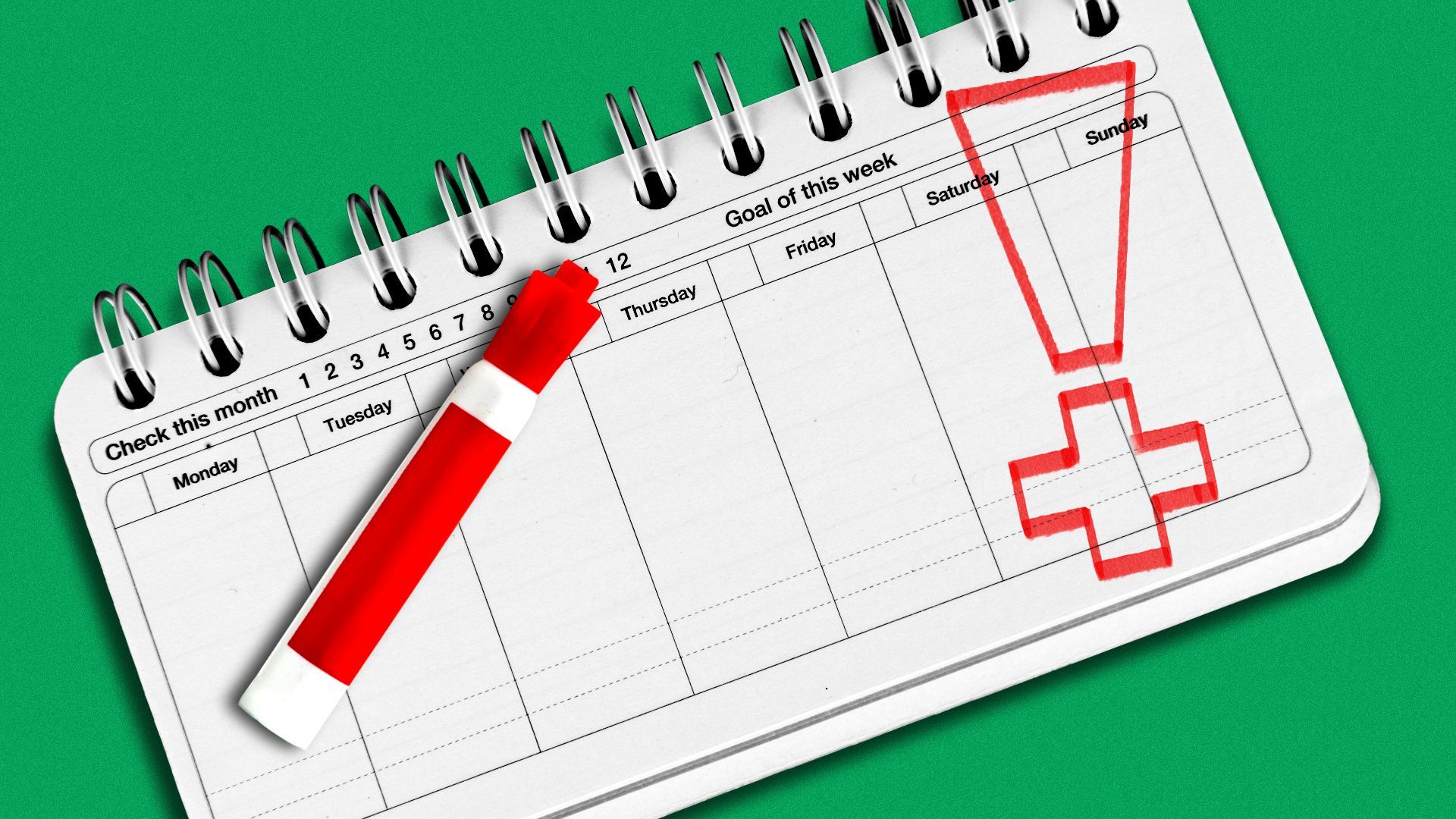| |
| |
| |
| Presented By Kaiser Permanente |
| |
| Axios Vitals |
| By Tina Reed · May 30, 2023 |
| Welcome back from the long weekend, Vitals readers! Today's newsletter is 994 words or a 4-minute read. Join Axios' Adriel Bettelheim tomorrow at 12:30pm ET for a virtual event examining ways to eliminate health care deserts and expand access to care. Guests include American Heart Association CEO Nancy Brown and Patient-Centered Outcomes Research Institute executive director Nakela L. Cook. Register here to attend. |
| |
| |
| 1 big thing: Coming to a hospital near you: 5G |
 |
|
| Illustration: Natalie Peeples/Axios |
| |
| Artificial intelligence may be grabbing headlines, but another technology revolution is finally starting to take place within the walls of hospitals: the switch to 5G. Why it matters: While most consumers still think about cellphone speeds when it comes to fifth-generation wireless networks, they could be game changers in enabling "smart" hospitals, along with intelligent grids and transportation systems. - It's a future in which remote telesurgeries become the norm and doctors receive patients' vitals and medical histories the moment they walk in the door with the help of some sensors and wearable devices.
What they're saying: "We're just at the beginning of the quantity of devices that are 5G enabled and that proliferation is going to be an incredible curve," Jen Artley, senior vice president of 5G acceleration at Verizon Business, which has been assisting the Cleveland Clinic as it prepares to launch its first fully enabled 5G facility in July. - "Having the ability to manage a network that knows how to handle a density of devices will be extremely important," Artley said.
The big picture: Worldwide, 5G in health care settings is picking up steam. China boasts the first 5G medical private network in the world. Hospitals in South Korea, Thailand, the U.K. and Israel have also come online. - The Department of Veterans Affairs' Palo Alto Health Care System became the first 5G-enabled hospital in the U.S. in February 2020.
- The Cleveland Clinic facility "will really be a test bed and a platform to launch new ideas and new innovation in health care technology," Matt Kull, the clinic's chief information officer, told Axios.
Between the lines: About 20% of U.S. hospitals have added some 5G connectivity, Dong Li, assistant professor at Emory University School of Medicine, who studies the impacts of 5G, told Axios. - But few are even using that capacity to its fullest potential.
- "My concern is that so many physicians I meet don't understand the importance of 5G," Li said. "Even leaders in hospitals don't know what they can do yet. We need more knowledge about how this could help them realize the future, to deliver care in the ideal way."
Go deeper. |
    |
| |
| |
| 2. Debt deal claws back COVID relief, spares Medicaid |
 |
|
| Illustration: Gabriella Turrisi/Axios |
| |
| Democrats beat back efforts to attach Medicaid work requirements to a debt limit deal, but the agreement reached over the weekend will claw back about $30 billion of unspent COVID relief funds and likely bring more budget austerity to federal health agencies. Driving the news: The 99-page agreement, if passed by both chambers of Congress, avoids steep health care funding cuts that some had feared while restraining spending levels enough to have implications for federal health agencies, experts tell Axios' Victoria Knight. - Non-defense discretionary spending levels will be kept roughly flat for 2024 and then given a 1% increase in 2025.
- It improves the chances Congress will write fiscal 2024 spending bills with at least modest increases for the National Institutes of Health, said Erik Fatemi, a principal at Cornerstone Government Affairs.
- "Worst case is the 1% automatic cut for NIH if they do not pass a Labor-HHS bill. That is manageable even if not ideal," said Chris Meekins, an analyst for Raymond James.
The deal also will rescind about $30 billion in unspent COVID relief funds from a variety of federal programs but preserve funding for veterans' health care and next-generation COVID treatments. What we're watching: Democratic lawmakers will likely supply the votes to pass the bill through the House, given the vows from right-wing House Freedom Caucus members to oppose it, Axios' Andrew Solender and Alex Thompson write. Read the rest. For the latest on the debt limit negotiations, subscribe to Axios Pro. Use code POLICY100, which gives you $100 off. |
    |
| |
| |
| 3. Study: MDs and DOs get similar outcomes |
| Death rates, hospital readmissions, the length of stay and the cost of care were virtually identical for hospitalized elderly patients treated by MDs and doctors of osteopathic medicine, according to a UCLA-led study in the Annals of Internal Medicine. Why it matters: The percentage of physicians with DO degrees is surging, and they're likelier to practice in rural and underserved areas. - Beyond health education, osteopathic medical schools add a technique involving manipulation of the musculoskeletal system.
What they found: Patient mortality rates were 9.4% among MDs vs. 9.5% among DOs, readmission rates were 15.7% vs. 15.6%, respectively, health care spending was $1,004 vs. $1,003 and lengths of stay were 4.5 days for both. Yes, but: The results focused on roughly 329,500 elderly Medicare beneficiaries hospitalized with medical conditions from 2016 through 2019 and may not apply to other population groups. |
    |
| |
| |
| A message from Kaiser Permanente |
| See all that health care can be |
| |
 |
| |
| Some health care experiences can be fragmented and impersonal, with the responsibility on the patient to make it work. But at Kaiser Permanente, everything works together to provide equitable, high-quality, affordable care and coverage that support the unique needs of each member. See how. |
| |
| |
| 4. Worries mount about misinformation in science |
 |
|
| Illustration: Aïda Amer/Axios |
| |
| Misinformation and disinformation are diminishing public trust in science and becoming an existential threat to the planet, researchers warned at a three-day meeting last week organized by the Nobel Foundation and the National Academy of Sciences, Axios' Alison Snyder writes. The big picture: False information about vaccines and climate change runs rampant on social media, where Americans are increasingly getting their news and information. - At the same time, a gap in trust of scientists is widening along political lines. And there's the added force of generative AI.
Details: Speakers described how the attention economy's business model intersects with the very human desire to belong — fueling an information environment riddled with misinformation and disinformation. - In a study published this year, Yale behavioral scientist Gizem Ceylan found the rewards — attracting attention and recognition in the form of likes and comments — of sharing online create habits that drive people's behavior more than their motivations do. The top 15% of habitual news sharers were involved in 30% to 40% of the false news shared in the study.
What to watch: Researchers found evidence supports labeling content (tagging about fact-checking, funding and other information that provides context) and publishing corrections to help people assess information on social media. There was less consensus about moderating content. |
    |
| |
| |
| 5. While you were weekending |
 |
|
| Illustration: Annelise Capossela/Axios |
| |
| New superbug-killing antibiotic discovered using AI. (BBC) Doctors say this is the most important virus you've never heard of. (CNN) In the world's largest rainforest, a new pandemic may be brewing. (Reuters) |
    |
| |
| |
| A message from Kaiser Permanente |
| See all that health care can be |
| |
 |
| |
| Some health care experiences can be fragmented and impersonal, with the responsibility on the patient to make it work. But at Kaiser Permanente, everything works together to provide equitable, high-quality, affordable care and coverage that support the unique needs of each member. See how. |
| |
| Thanks for reading Axios Vitals, and to senior health care editor Adriel Bettelheim and copy editor Carolyn DiPaolo. Please ask your friends and colleagues to sign up. |
 | | Dive deeper into the future of health care | | |
No comments